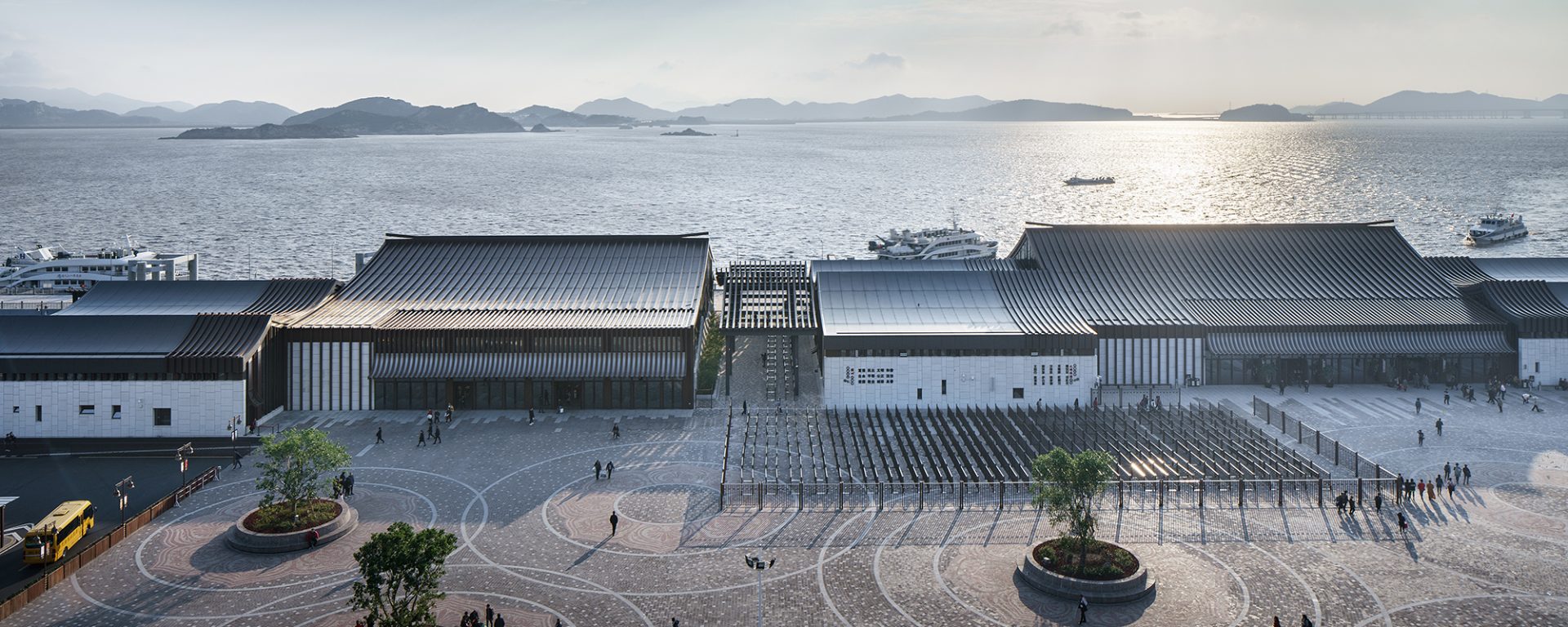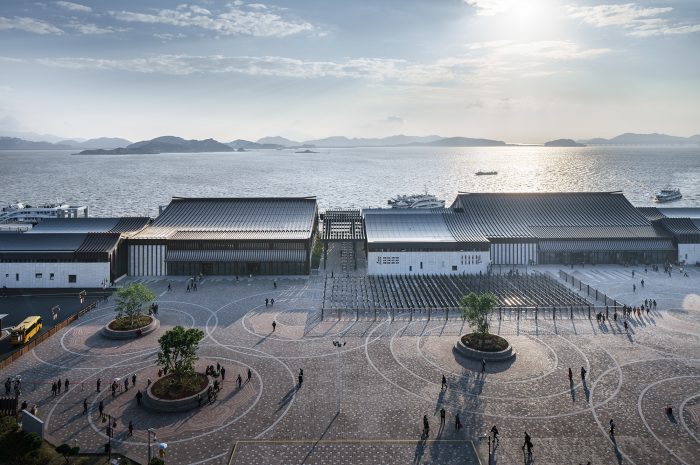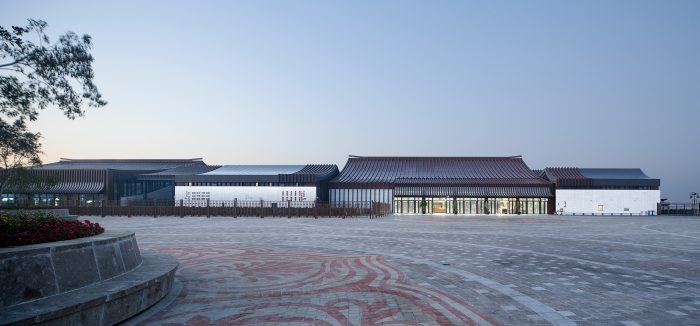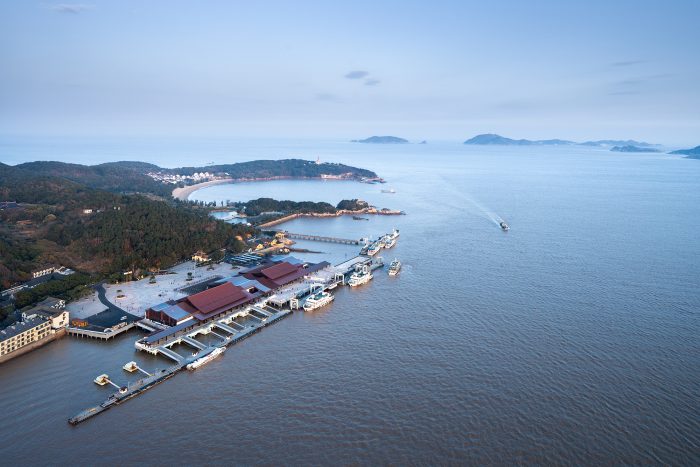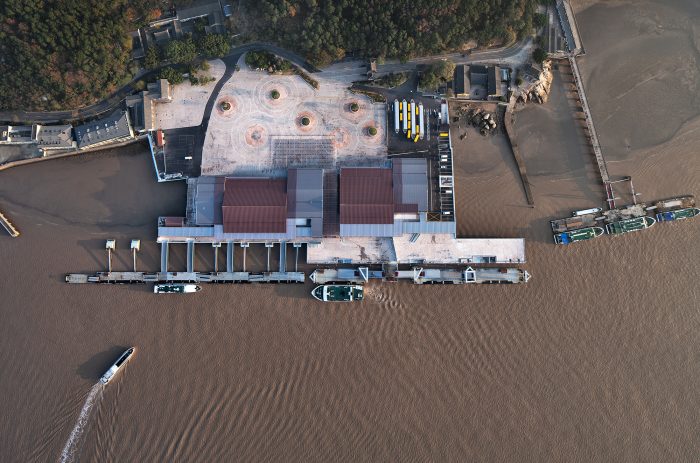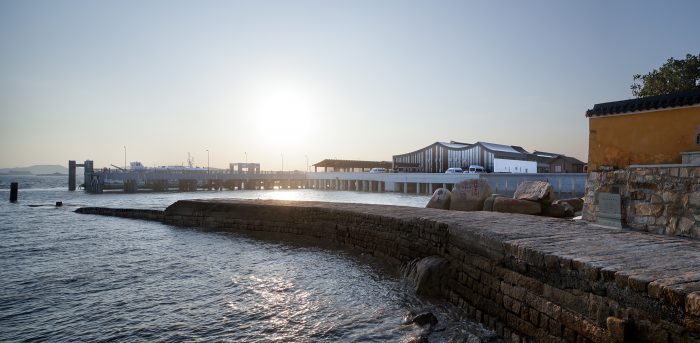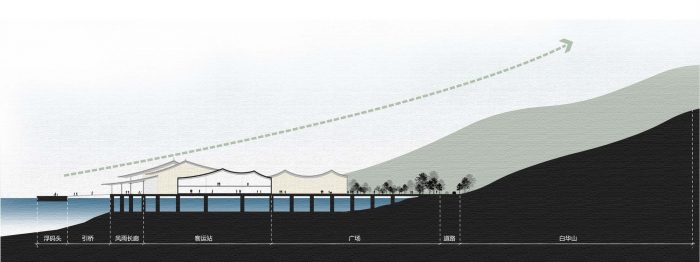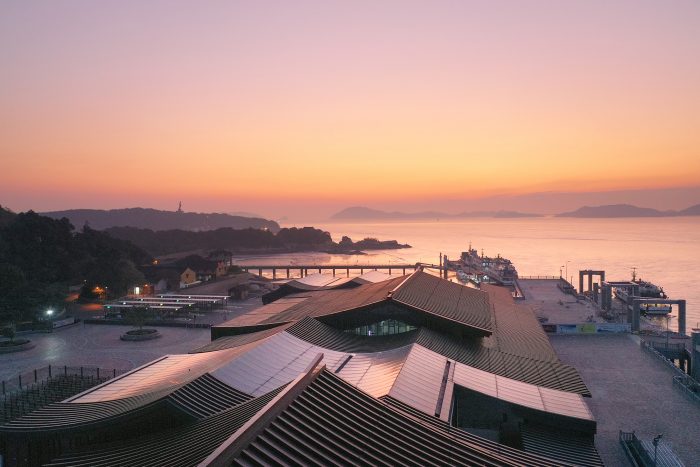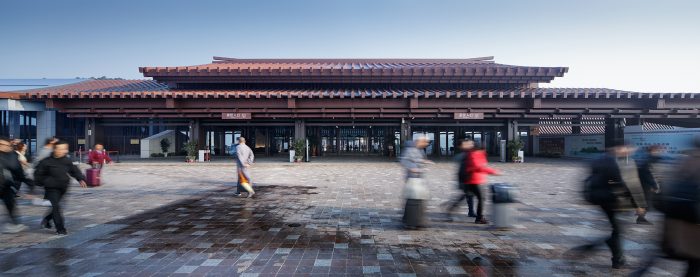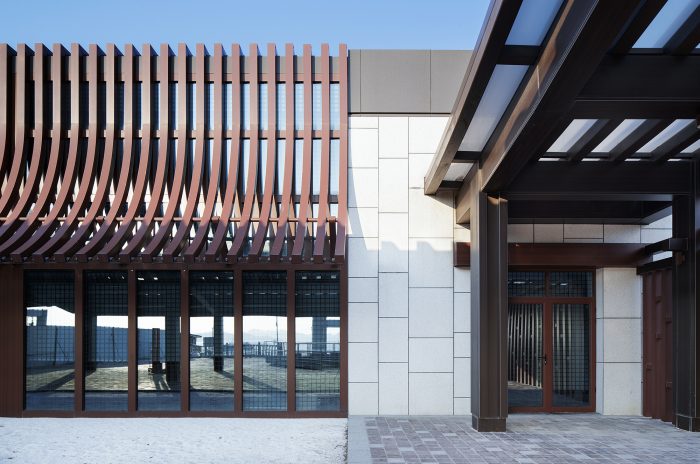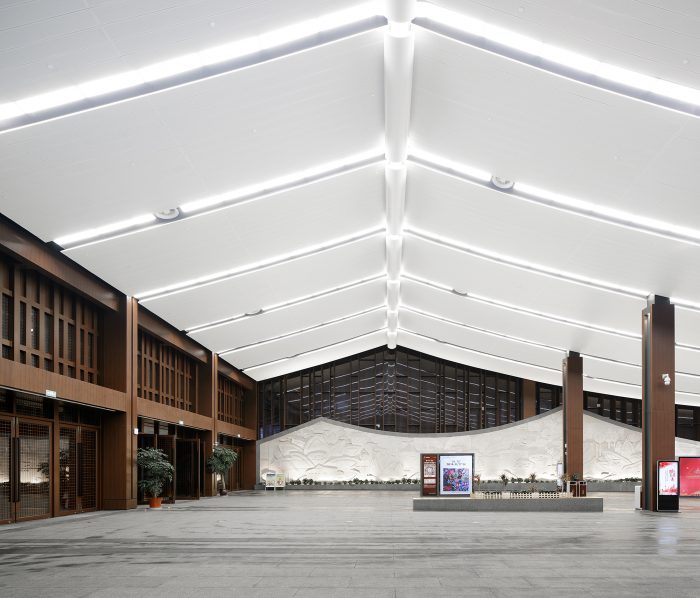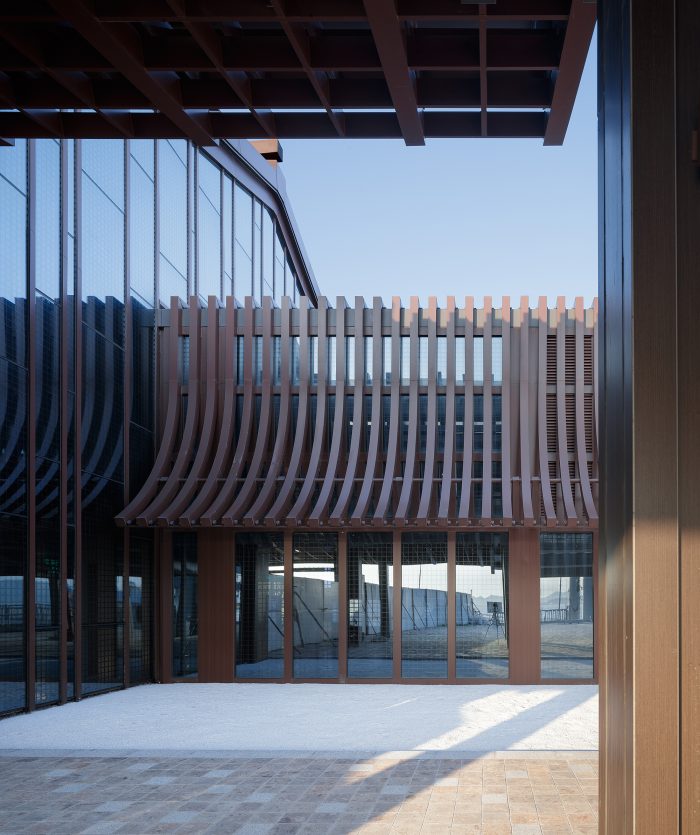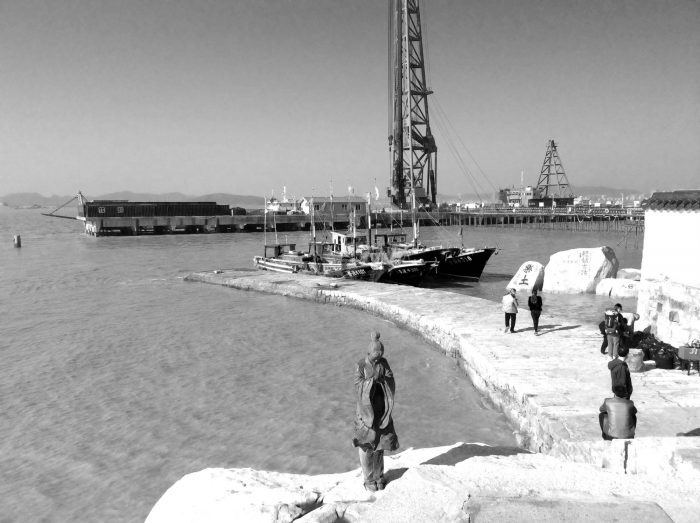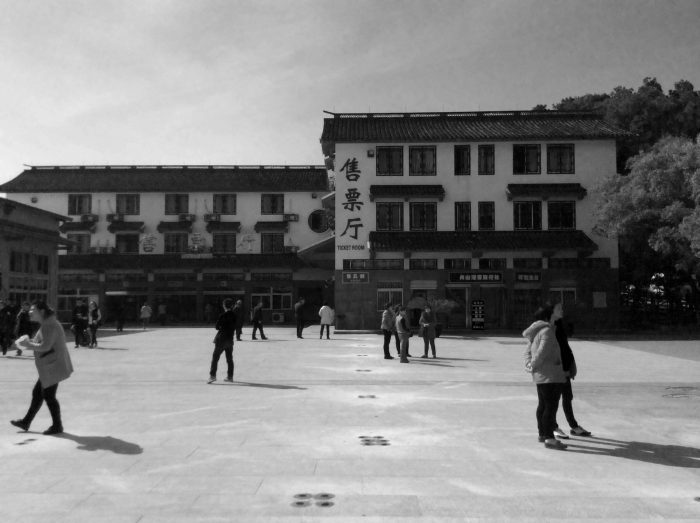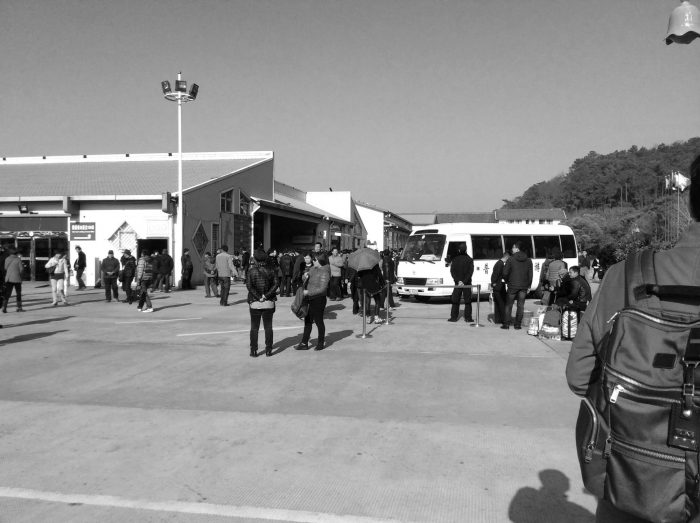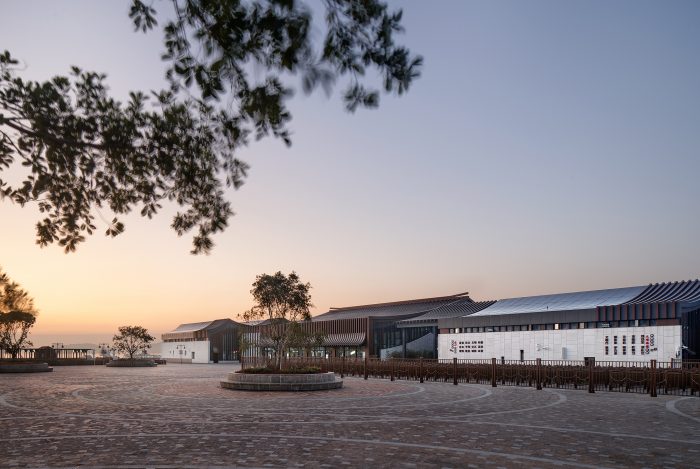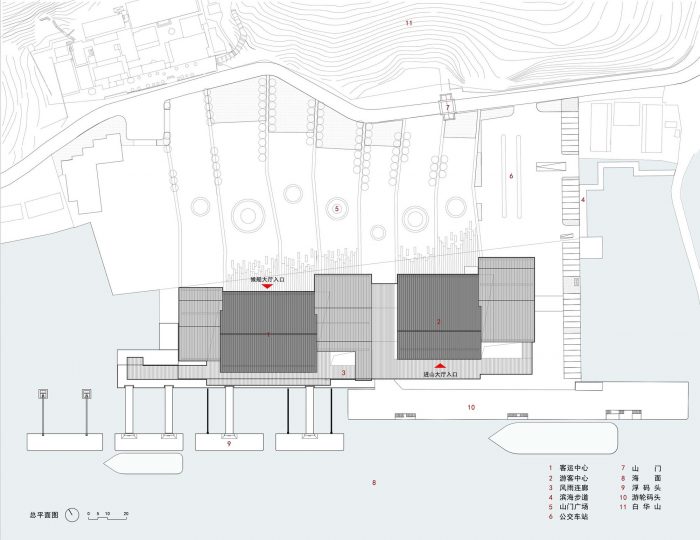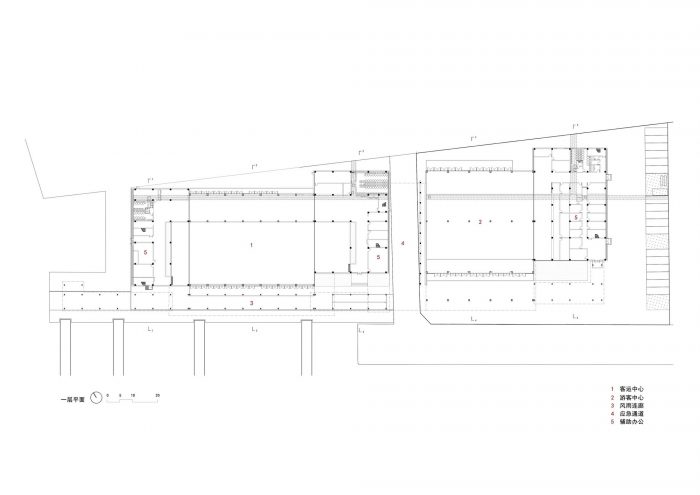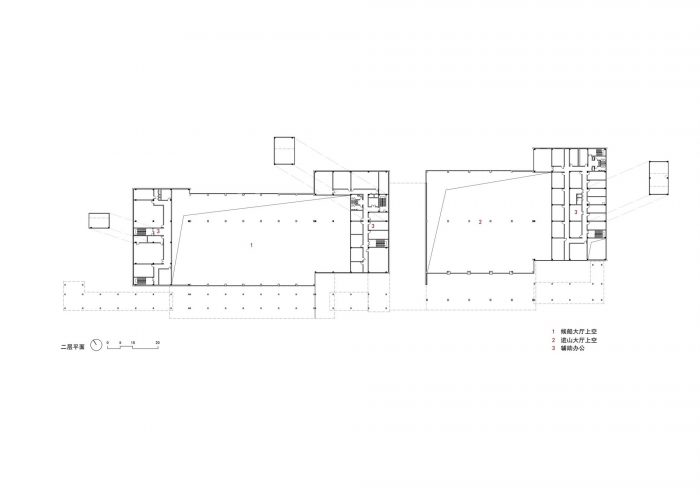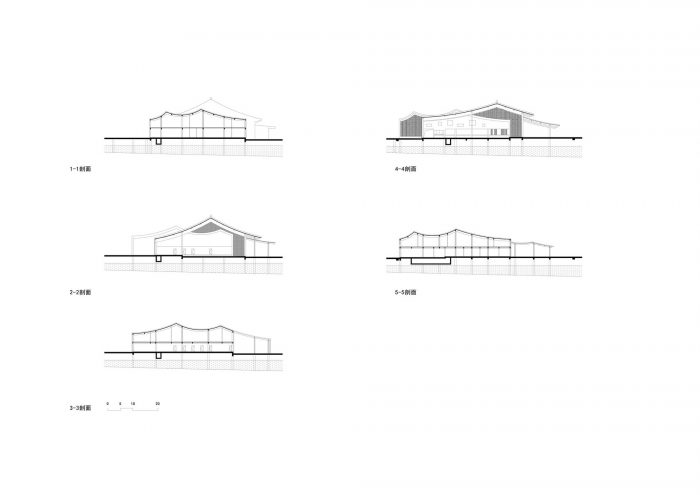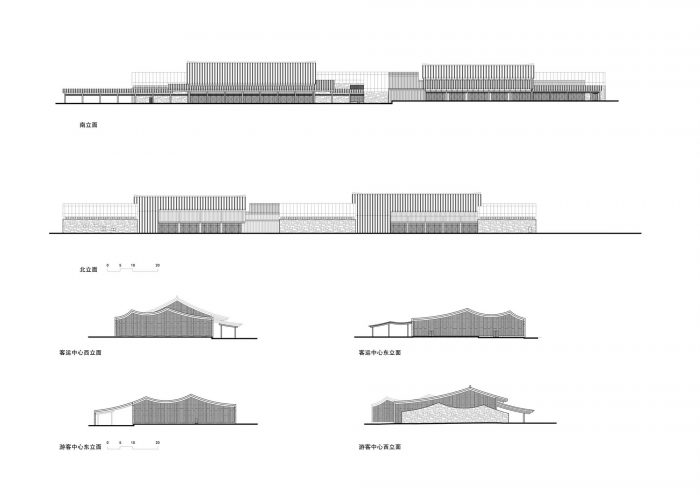在国际化、全球化的时代,我们所使用的产品,甚至我们的思想都已经脱离了当地的语言和文化。世界正日益变得 “虚拟 “和 “扁平”。对于建筑来说,全球化带来了先进的建筑方式和最优的材料,但同时也带来了焦虑和身份的丧失。我们认为,现代建筑需要重新融入本土语境和文化元素,重新激活场地精神,平衡国际化和本土化,从而实现未来多元化的建筑设计。
In the era of internationalization and globalization, products we use and even our thoughts have been separated from local languages and cultures. The world is increasingly becoming “virtual” and “flat”. For architecture, globalization has brought advanced construction approaches and optimal materials, but at the same time caused anxiety and loss of identity. We think that modern architecture needs to reincorporate local context and cultural elements, reactivate the spirit of the site and balance internationalization and localization, so as to realize diversified architectural designs in the future.
该项目位于浙江省舟山市普陀山岛。作为普陀山风景区唯一的公共港口,集码头区、售票处、游客集散广场、船舶等候区等功能板块于一体。景区每年接待游客1200多万人次,但以前的客运中心太过拥挤,无法容纳日益增多的游客。考虑到遗址的历史和生态价值,我们保留了原有的布局,将入口和出口分别设置在东西两侧,以延续码头的运营模式。此外,我们还建设了一个向海延伸的平台,作为新客运中心的基础。同时,将原客运中心所占区域改造为前广场,既拓展了室内外空间,又保证了施工期间码头的正常运行。
The project is located on Mount Putuo Island, Zhoushan, Zhejiang Province. As the sole public port of the Putuo Mountain Scenic Area, it integrates dock area, ticket office, tourist distribution square, ship waiting area and other functional sections. The scenic area receives more than 12 million visitors each year, but the former passenger transportation center was too cramped to accommodate the increasing number of tourists. Given the historical and ecological value of the site, we maintained the original layout where the entrance and the exit were respectively set on east and west sides, in order to continue the operation mode of the pier. Besides, we built an extended platform towards the sea as the foundation of the new passenger transportation center. Meanwhile, the area occupied by the original passenger center was transformed into a front square, which not only extended the indoor and outdoor spaces but also guaranteed normal operation of the wharf during the construction period.
建筑设计打破了传统交通设施的大体量和标志性形象。从南到北,视线从海面上的长廊逐渐提升到平缓的斜顶,最后到达远山。在东西方向上,所有建筑体量融为一体。入口大厅、出口大厅等辅助空间相互平行,但赋予不同的深度,两翼后移,尽量减少视线的遮挡。通过这样的空间格局组织,我们创造了一种宽松而低调的建筑姿态,将码头变成了一个过渡空间,也是岛上佛教礼拜的起点。
The architectural design breaks with the large volume and iconic image of conventional transportation facilities. From south to north, the sight line is gradually lifted from the long corridor above the sea to the gentle pitched roof and finally reaches distant mountains. In east-west direction, all architectural volumes are integrated into a whole. The entrance hall, exit hall and other auxiliary spaces are parallel with each other but are given different depths, and the two wings are set back to minimize the obstruction of sight line. Through organizing the spatial pattern in such manner, we created a loose yet low-profile architectural gesture, and turned the pier into a transitional space as well as starting point for Buddhist worship on the island.
模块化单元与传统建筑语言相结合,缩小整体体量,产生中国传统建筑体系中的 “五层”:支架、海湾、庭院、建筑、城市。由于支架失去了现代建筑的功能,海湾成为最小的模块。
Modular units are combined with traditional architectural languages, to reduce the overall volume and produce the “five layers” of traditional Chinese architectural system: bracket, bay, courtyard, building and city. As bracket loses its function for modern architecture, bay has become the smallest module.
东西向大跨度的结构体系,完美地支持了以湾为最小模块的理念,实现了现代建筑与地方传统的融合。窗台模块是建筑形式的基础。不同的窗台根据功能进行协调,单个窗台或多个窗台的组合塑造出不同尺度的空间。柱网和屋顶与海湾相对应,共同构成 “建筑”。
The large span of the structural system in east-west direction perfectly supports the idea of taking bay as the smallest module, which enables the integration of the modern architecture and local traditions. Bay modules lay the foundation of the architectural form. Different bays are coordinated based on functions, with single bays or combinations of several bays shaping various spaces with distinct scales. Column grids and roofs correspond to bays, together forming the “building”.
建筑模块可以通过不同的语言和方式来表达。拼贴的方法可以丰富建筑结构的形式和意义。它可以将不同的材料、色彩和尺度并置,而我们要做的是在感性的基础上实现这些元素之间的平衡。通过巧妙地调整海湾之间的相对位置,并将其围合起来,形成了 “庭院”。通过不同的大小,这些庭院将自然景观引入建筑中。
Building modules can be expressed by different languages and ways. The method of collage can enrich both the form and meaning of the building structure. It enables the juxtaposition of different materials, colors and scales, and what we had to do was to achieve balance among those elements based on sensibility. Through subtly adjusting the relative positions among bays and enclosing them, “courtyards” were formed. With different sizes, those courtyards bring natural landscape into the building.
现代建筑是国际化的,但又是 “侵入性 “的。然而,它也应接受地域主义和本土化。只有这样,才能建立起纯粹性与场地文化背景之间的平衡关系,才能使建筑变得自然而有意义。更重要的是,只有这样的 “平衡建筑 “才能真正引起人们的共鸣。
Modern architecture is international yet “invasive”. However, it shall also embrace regionalism and localization. Only in this way, can a balanced relationship between purity and the site’s cultural context be established, and can the building become natural and significant. More importantly, only such kind of “balanced architecture” can truly resonate with people.
建筑师:UAD
面积:10782 m²
年份:2020年
摄影作品。赵强、洪涛
厂家:上海丰丽集团有限公司 上海丰丽集团有限公司, 杭州蓝天安全玻璃有限公司, 浙江惠石贸易有限公司, 舟山新东石业有限公司
设计团队:沈晓明、陈雪峰、洪涛
结构设计:刘国敏、陈伟
给排水设计:王铁峰、唐宇
暖通系统:付少峰
美普设计:袁松林、丁新业
智能设计:蒋冰、张武波
幕墙设计:史炯炯、洪超、王杰能
装修设计:余芳、彭文辉、罗宝珍
景观设计:黄璐、舒红、张蓓蓓
泛光照明设计:庞晓晓、陆丹宇、肖树正
建筑经济师:王云峰
城市:舟山
国家:中国
Architects: UAD
Area: 10782 m²
Year: 2020
Photographs: Qiang Zhao, Tao Hong
Manufacturers: 上海丰丽集团有限公司, 杭州蓝天安全玻璃有限公司, 浙江惠石贸易有限公司, 舟山新东石业有限公司
Design Team:Xiaoming Shen, Xuefeng Chen, Tao Hong
Structural Design:Guomin Liu, Wei Chen
Water Supply & Drainage Design:Tiefeng Wang, Yu Tang
Hvac System:Shaofeng Fu
Mep Design:Songlin Yuan, Xinye Ding
Smart Design:Bing Jiang, Wubo Zhang
Curtain Wall Design:Jiongjiong Shi, Chao Hong, Jieneng Wang
Decoration Design:Yu Fang, Wenhui Peng, Baozhen Luo
Landscape Design:Lu Huang, Hong Shu, Beibei Zhang
Floodlighting Design:Xiaoxiao Pang, Danyu Lu, Shuzheng Xiao
Construction Economist:Yunfeng Wang
City:Zhoushan
Country:China

